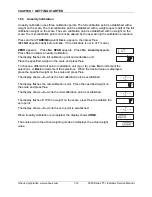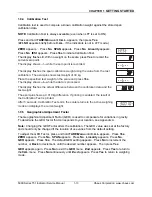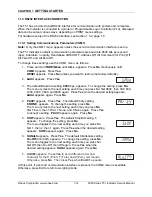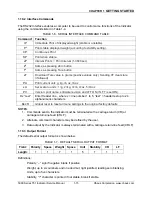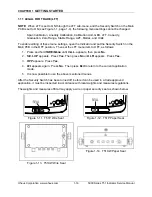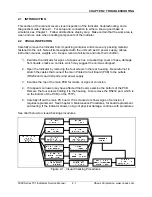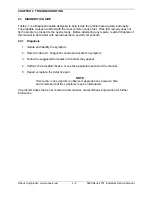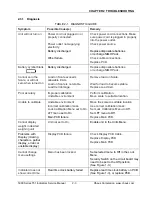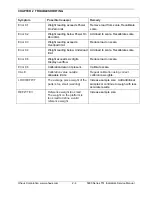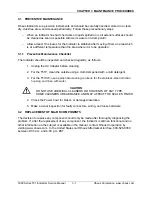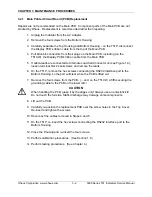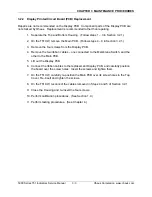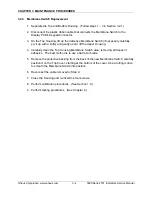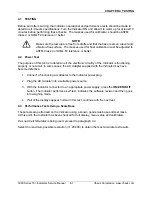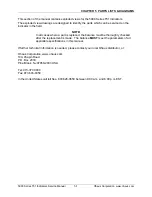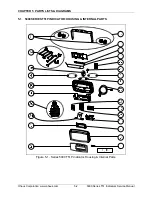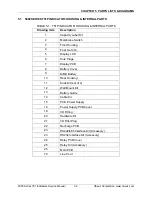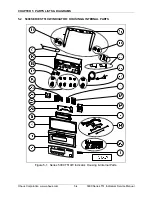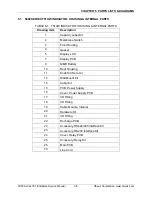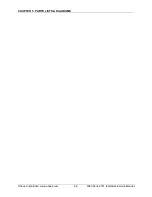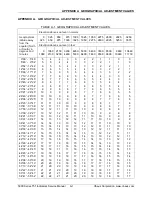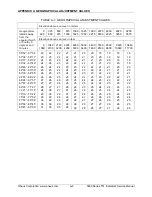
CHAPTER 4 TESTING
4.1 TESTING
Before and after servicing the Indicator, operational and performance tests should be made to
determine if it meets specifications. Turn the Indicator ON and allow it to warm up for at least 10
minutes before performing these checks. The masses used for calibration should be ASTM
Class 4 or OIML F2 tolerance or better.
NOTE:
Make sure the test area is free from drafts and that the base rests on a level and
vibration-free surface. The masses used for final calibration must be adjusted to
ASTM Class 4 or OIML F2 tolerance or better.
4.2 Power
Test
The purpose of this test is to determine if the electronic circuitry of the Indicator is functioning
properly or not at all. In some cases, the AC Adapter supplied with the Indicator may have
become defective.
1. Connect a functioning AC Adapter to the Indicator power plug.
2.
Plug the AC Adapter into a suitable power source.
3. With the Indicator connected to an appropriate power supply, press the
ON/ZERO Off
button. The Indicator performs a self-test, indicates the software revision and then goes
into weighing mode.
4.
If all of the displays appear normal in this test, continue with the next test.
4.3 Performance Tests Using a Scale Base
These tests are performed on the Indicator using a known good scale base and test mass.
At this point, the Indicator has been checked for full display, menu setup and calibrated.
If a Load Cell Simulator is being used, proceed to paragraph 4.4.
Select the maximum possible resolution (<1:20,000) to obtain the most accurate test results.
5000 Series T51 Indicators Service Manual
4-1
Ohaus Corporation www.ohaus.com
Summary of Contents for T51P
Page 2: ......
Page 4: ......
Page 41: ......
Page 42: ... 80252587 P N 80252587 SERVICE MANUAL 5000 SERIES T51 INDICATORS ...


